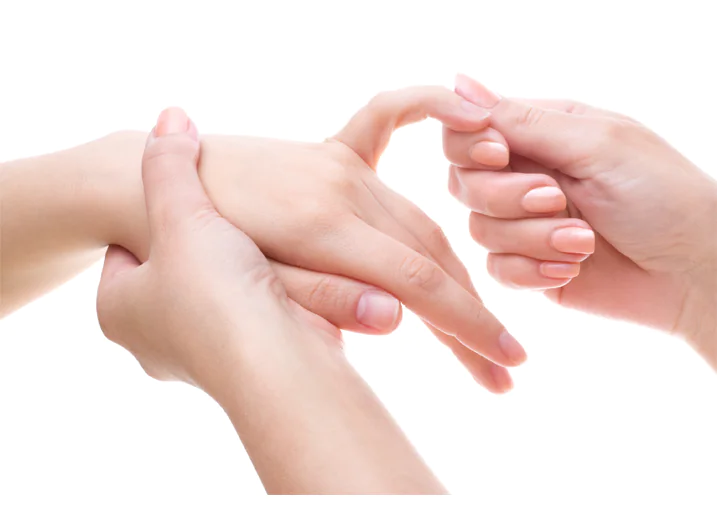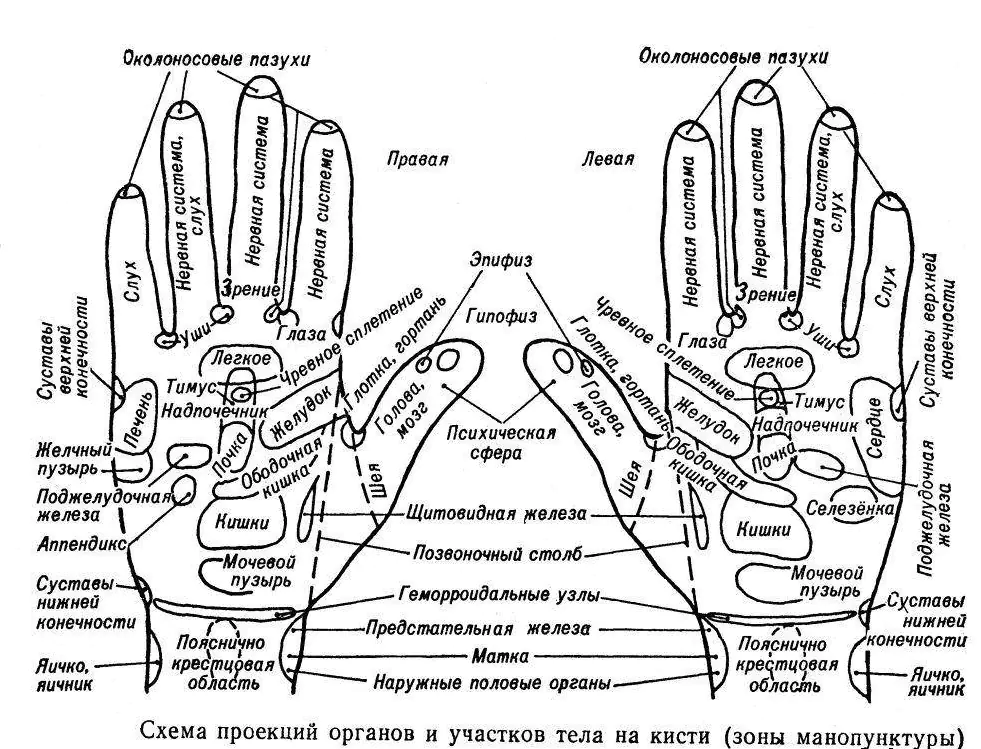Throughout the working day, the arm muscles experience quite heavy loads. As a result, tension accumulates, which negatively affects our performance and our health, causing pain in the neck, shoulders, etc. A hand massage can relieve all discomfort, pain, and tension.
Hand massage has a special place. Because it is there that there are a huge number of points with reflex cells, which in turn have an effect on certain parts of our body and can improve well-being. In general, any massage is positive: it allows you to relax, relieve tension, cure a serious illness, get rid of cosmetic imperfections, etc.

Perfectly relieves tension and discomfort
Action
This procedure affects all muscles, joints, layers of skin, and blood vessels. Separately, I would like to draw attention to how massage affects the central nervous system, stabilizing its functionality. And undoubtedly, the sessions have a beneficial effect on the entire human body. As already mentioned, there are a large number of acupuncture points located on the palms. By stimulating these points, we influence certain organs, improving their functionality.
This procedure is recommended after heavy physical activity to restore muscle performance, relieve tension, and strengthen joints and blood vessels. Also, under the influence of massage, you can get rid of such consequences as swelling, bone fractures, and damage to soft tissues.
It is very good to use the procedure for cosmetic purposes. With its help, you can clean the top layer of skin from keratinized epidermis, dust particles, any external contaminants that clog pores. As a result of rubbing, the outflow of lymph is activated, which helps improve skin nutrition at the micro level. Ultimately, the skin becomes firm, elastic, velvety, acquiring a vibrant color.
With the help of various nourishing creams, massage oils, gels, massage increases its effectiveness.
Methods of influence
Techniques and methods of influence include exercises such as stroking, rubbing, kneading, patting, twisting, pinching, etc. The complex of all these techniques is called hand massage. It is important to know that all techniques are performed in strict sequence.
I would like to highlight self-massage in this procedure. Self-massage is the most common method of influence, since rubbing oil into the skin, rubbing, stroking movements is massage. When performing self-massage, it is recommended to replace stroking movements at a slow pace with rubbing at a faster pace. All movements are performed in the direction from the fingertips to the elbows.
If the procedure is performed by a massage therapist, in addition to the basic techniques, he uses slightly different ones, such as kneading, Chinese acupressure, Thai, etc. I would like to pay special attention to water massage. The essence of its effect is to pour a stream of water over the hand from hand to forearm and back. Pouring is performed from the inside and from the outside. This method is very effective for diseases of the cardiovascular system. In addition, it gives a very pleasant sensation.

A certain point affects a certain internal organ
Technique
The technique includes massage of the fingers, massage of the hands, wrist joints, forearms, elbow joints, shoulders, shoulder joints.
Finger massage
During this procedure, the patient can either sit or lie down. The hand is placed on a massage roller, which is located on the massage table. The techniques are performed with one or two hands. If a specialist performs the procedure with one hand, he fixes the patient’s hand with the other. It all starts with planar stroking, in which the thumb and index finger simultaneously and synchronously act on the palmar and dorsum of the finger being massaged. You should start from the tip of your finger, gradually moving to the base. Each finger is worked in this way.
What follows is a similar technique, but in the form of shading. It should be done in the transverse and longitudinal direction. Then the massage therapist begins kneading. To do this, he grasps the soft tissue of the patient's fingers with his thumb and forefinger and performs circular movements. There may be some retraction. It also moves from the tip of the finger to the base. Afterwards rubbing and stroking is performed again.
At the end of the procedure, the patient is asked to actively move the joint of each finger.
Hand massage
During this procedure, the position of the hand should be the same as when massaging the fingers. The first step is to stroke the back of the hand, starting from the fingertips and ending with the base of the palm. Having finished stroking the back side, the massage therapist begins deep stroking and rubbing each tendon in a stroke-like manner.
Next, the interosseous muscle is massaged using the same technique. To do this, the patient needs to spread his fingers, then the massage therapist will alternately stroke the interosseous spaces.
If any violation of the elasticity of the interosseous muscles of the hands is detected, in this case the massage therapist performs techniques by grasping two metacarpal bones in turn and moves them in the opposite direction.
Working through the palmar surface of the hand, stroking and then rubbing are performed. Stroking, rubbing and transverse kneading are performed alternately, during which the massage therapist pulls the soft tissue away from the bones.
Forearm massage
The procedure begins with an introductory massage. To do this, the massage therapist fixes the patient’s hand with one hand, and with the other hand performs planar stroking of the back surface of the hand. Then, gradually the massage flows into the performance of grasping, continuous stroking of the dorsum of the forearm and the lower third of the shoulder. This completes this technique.
Then the massage therapist strokes the palmar surface of the hand and fingers, gradually moving to the forearm. In this area, the massage therapist performs continuous grasping stroking. It is enough to perform 4-5 strokes. Then the specialist shakes the hand, if there are no contraindications for this, and proceeds to separate massage of the extensor and flexor muscles.
When massaging this muscle group, it is necessary to achieve maximum muscle relaxation. To do this, the patient needs to bend his forearm at an angle of 110 degrees and place his hand on the massage roller. The massage therapist helps the patient to position his hand correctly. When massaging the forearm extensor muscles with one hand, the specialist fixes the hand, with the other he makes grasping, continuous strokes along the inside of the ulna, moving towards the lower third of the shoulder.
Shoulder and forearm massage
This procedure begins by treating the layer of superficial muscles of the forearm, which are formed by the pectoral muscles. The superficial layer of muscles formed by the deltoid and trapezius muscles is also massaged. Massage of the deltoid muscle begins with grasping, continuous stroking of the entire muscle. Next, separate forceps-like stroking of the anterior and posterior muscle bundles is performed.
This is followed by rubbing the shoulder girdle in the form of sawing, with elements of intermittent vibration.
Having completed the treatment of the shoulder girdle, the massage therapist proceeds directly to kneading the shoulder. To do this, continuous grasping stroking of all shoulder muscles is performed. Then the specialist performs semicircular rubbing with elements of stroking.
As in the previous procedure, the preparatory process is followed by separate massage of the flexor and extensor muscles. The massage therapist grasps the flexor muscles of the arm and performs continuous stroking, gradually moving along the internal groove of the biceps muscle. When massaging the extensor muscles, the triceps muscle is massaged.
Massage of the shoulder joints of the arms
This procedure begins with rubbing the muscles of the shoulder girdle. Semicircular rubbing is performed, alternating it with stroking the front of the shoulder joint. Having completed the procedure with the front part, the massage therapist proceeds to the back surface. There, circular movements are made along the surface of the shoulder joint.
The entire hand massage procedure should be completed with a smooth, light massage, moving from the wrist to the shoulder. Finally, the joints are relaxed by gently tilting up and down 7-10 times.



